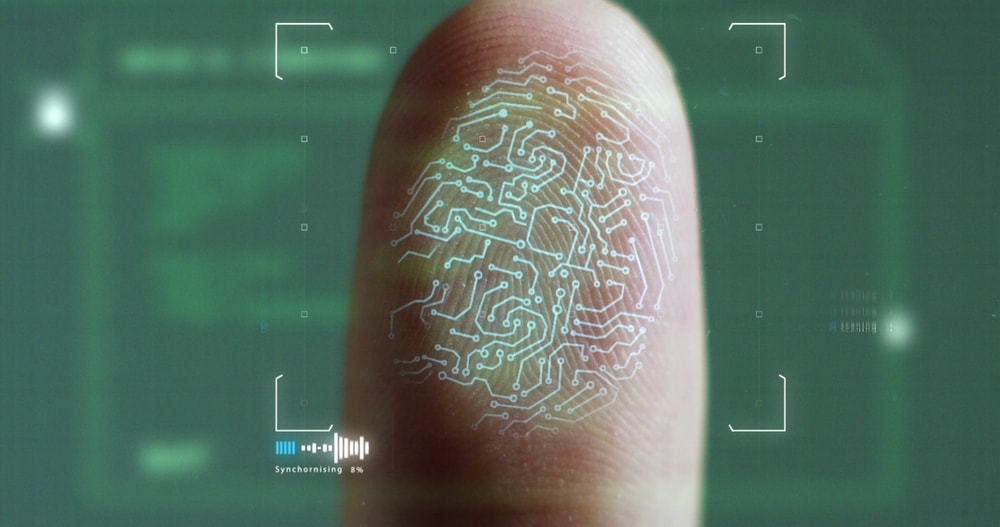Finger Print Authentication
“A biometric factor is something physiologically unique about an individual, such as a fingerprint, facial image, iris, voice pattern, and handwriting. When an individual wants logical or physical access (depending on the implementation), a sample is taken of the authenticatee’s biometric data, for example, a fingerprint. Then, the authenticator, using a previously enrolled version of the same biometric template can match the
sample against the stored template to verify the individual’s identity” “Biometrics are not secret, as everyone leaves fingerprints everywhere they go, faces and eyes can be photographed, voices can be recorded, and handwriting samples can be obtained.
The security of the fingerprint authentication system therefore relies on the integrity and authenticity of the biometric information”1, therefore careful evaluation must be done for the selection of the fingerprint authentication and Good practices should be followed during the implementation, enrollment and administration of the fingerprint authentication system.
The purpose of this paper is to give a good understanding of fingerprint authentication and to present a set of criteria to be considered while evaluating, implementing and administrating a fingerprint based biometric authentication system.
Fingerprint
Fingerprints have been accepted as the most common form of biometrics authentication today. The strong point about using fingerprint biometrics are that giving fingerprints is more widely accepted, convenient and reliable than other forms of physical identification, especially when using technology. In fact, it is considered that fingerprint identification is the least intrusive of all biometric technologies when privacy is the concern.
Every human beings fingerprint is unique. Each fingerprint has a unique characteristic and pattern that is made up of lines and spaces.
The lines are called ridges while the spaces between the ridges are called valleys. These patterns of ridges and valleys are used to match the fingerprint for verification and authentication. This unique fingerprint trait is termed “minutiae” and comparisons are made based on these traits. “As Dan M. Bowers explains in Access Control and Personal Identification Systems: There are about one billion possible minutiae combinations on a fingerprint; since there are about 5 billion people inhabiting the Earth, and each has ten fingers, this means that statistically it is likely that fifty people on Earth share a fingerprint”.

Fingerprint matching techniques
Fingerprint matching techniques can be placed into two categories: minutiae-based and correlation based.
Minutiae-based: “Minutiae-based techniques first find minutiae points and then map their relative placement on the finger. However, there are some difficulties when using this approach. It is difficult to extract the minutiae points accurately when the fingerprint is of low quality. Also this method does not take into account the global pattern of ridges and furrows.”
Correlation based Method: “The correlation-based method looks at the entire pattern of ridges and valleys in the fingerprint. The location of the whorls, loops, and arches and the direction that they flow in are extracted and stored.”6 But it is able to overcome some of the difficulties of the minutiae-based approach. However, it has some of its own shortcomings. “Correlation-based techniques require the precise location of a registration point and are affected by image translation and rotation”
Finger print authentication technology
Finger print authentication technology is divided into two processes Identification and Verification
Identification Process
In Identification process, an individual presents a sample to the biometric system during enrolment. The biometric system then attempts to compare the sample with the database which has samples stored in it. This is one-to-many form of comparison. The identification process is further divided into positive identification and negative identification.
Positive identification: In a positive identification system users do not enter a pin number along with their fingerprint, “but simply place their finger on the capture device and their finger print is identified by matching the fingerprints in the database.
Negative identification: In these systems searching the databases is done in the same fashion, comparing one template against many, but these systems are designed to ensure that a person is not present in the database.
Verification Process
Verification is a one-to-one comparison in which the biometric system attempts to verify an individual's identity. In this case, a new biometric sample is captured and compared with the previously stored template. If the two samples match, the biometric system confirms that the applicant is who he/she claims to be.
The same four-stage process — captures, extraction, comparison, and match/non-match — applies equally to identification, recognition and verification. Identification involves matching a sample against a database of many, whereas verification involves matching a sample against a database of one.
